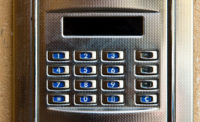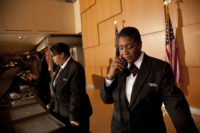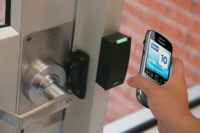After a young man shot more than 70 people in a Colorado movie theater in July, many companies of all types and sizes have since re-evaluated their access control systems. And for businesses deemed “challenging to control,” finding the right solution can make all the difference in protecting your assets – whether property or people.
Located not far from the Aurora movie theater in Northwest Denver is Laradon, a non-profit agency that provides programs and services to children and adults with developmental disabilities and other special needs. The Colorado shooting made Annie Green, Deputy Director of Laradon, take pause and re-evaluate Laradon’s access control system.
“The people we serve are vulnerable and really don’t have survival skills to duck, run or hide if a shooter were to get in here,” says Green. “In addition, many are confined to wheelchairs and have limited body movement.”
Add to that the fact that the campus takes up about 5.5 acres and through a series of expansions, Green admits that there are many doors that need monitoring. It was two school shootings – Columbine and Clear Creek Canyon – that made Laradon want to deploy electronic access control on those doors.
“Our decision was purely precautionary,” she says. “We knew that our clients were more vulnerable and wanted to take better control of our environment.”
Laradon uses an access control system that has a Web-based infrastructure and centralized online administration. “By being Web-based, I have 24-hour access to the buildings even when I’m not actually onsite,” explains Green. “And, I can provide access to employees after hours if someone needs to get in for any reason.”
Twenty-two doors throughout the campus are tied to the system so that entrants strike a badge reader to release the door. The doors are on a 10-second timer to reduce incidents of piggybacking. “The system provides a sense of security in that we know that those on campus are supposed to be there and when we leave at night, we know the doors are locked,” says Green.
Having that sense of security is what electronic access control (EAC) systems provide. Thus, industry experts expect sales of access control systems to be on the rise. A GIA report on electronic access control systems states that although the prolonged severity of the recent economic slowdown, and depressed key end-use sectors have elicited decline in value sales for electronic access control systems (EACS), the potential for access control usage will grow, thanks to advancements in the technology, such as Web-based capabilities that bring access control outside of the physical property and enable remote monitoring. Additionally, some predict that access control is headed toward cloud solutions.
For some companies, online access control offers high security at a much higher cost, so for businesses with limited budgets, less technology access control systems are still prevalent. Mechanical locks offer low security at low costs. And, then there is a spectrum of options in between that introduce a new medium security option to the mix. This can help a security executive achieve a higher total level of security for any given budget.
Open, Yet Closed
For university campuses, the dilemma is maintaining a balance between a welcoming and open environment and putting security controls in place to protect students and visitors.
“My number one problem is that the students don’t understand that their safety is our concern, and they try to circumvent the access control system by putting pebbles in doors to keep them open for their friends who are not authorized to be there,” says Steven J. Heidke, Director of Public Safety and Chief of Campus Police for Missouri Baptist University.
But, Heidke’s Web-based access control system sounds an alarm when doors don’t close within a few seconds, and that's when Heidke receives a text message. “The 500 resident students have stopped propping open the doors now,” he says.
To date, Missouri Baptist has invested between $150,000 and $175,000 in Bright Blue and has installed the system on an elevator in a new student apartment building. Only those who have authorization can swipe a chip that will call the elevator to their floor rather than the old-fashioned way of simply pushing a button.
George Mason University is experiencing a similar challenge of balancing security with a welcoming environment. Danny Anthes, Senior Manager of Information Technology at the university’s Auxiliary Enterprises, says that controlling access to student housing is critical. He is achieving that balance with Wi-Fi locks that enable a more dynamic approach to security, says Anthes. For instance, the campus, which has a population of 6,000 students, recently added a new residence hall that is about 60 miles away from the main campus. Having remote management of this new hall provides greater peace of mind.
“EAC provides an audit trail of who was where and allows us to connect the dots in the larger picture across multiple campuses,” says Anthes.
Like the universities, protecting people is what Carestream Health, Inc. does well – protect people’s medical and dental imaging records, that is. The international company, formerly the medical imaging arm of Eastman Kodak, has to safeguard patient information. Carestream is using the Frontier EAC from Matrix Systems to do that.
By using a combination of card and biometric readers, people entering a Carestream facility are instantly identified and confirmed by the Carestream Security System (CSS). This technology offers Carestream full convergence of logical and physical access control, controlling who gets on the network or through the door with merely a finger.
Movie Theaters Reel In Access Control |
|
A movie theater never really fit the description of an environment where monitoring access control was difficult. But then the Colorado Movie Massacre happened. A man in a costume purchased a ticket and went inside to seemingly watch the new Batman film, “The Dark Knight Rises.” Thirty minutes after the movie began, he feigned receiving a cellphone call, got up and went through the theater’s exit door. He was able to slightly prop the door open so that he could go to his car and come back to kill 12 people and injure 59 others, according to media reports.
|





